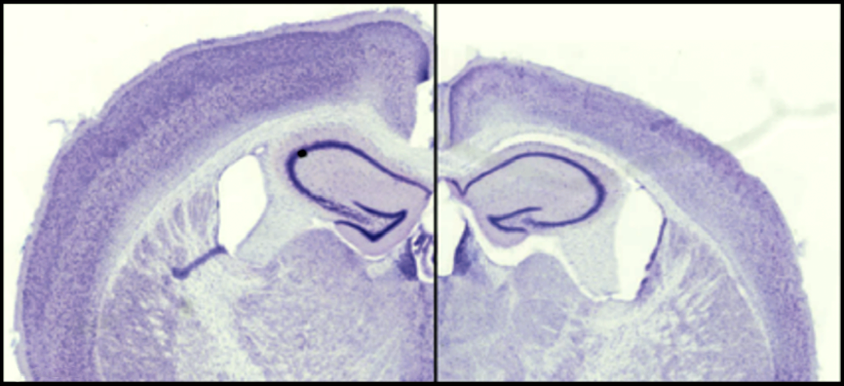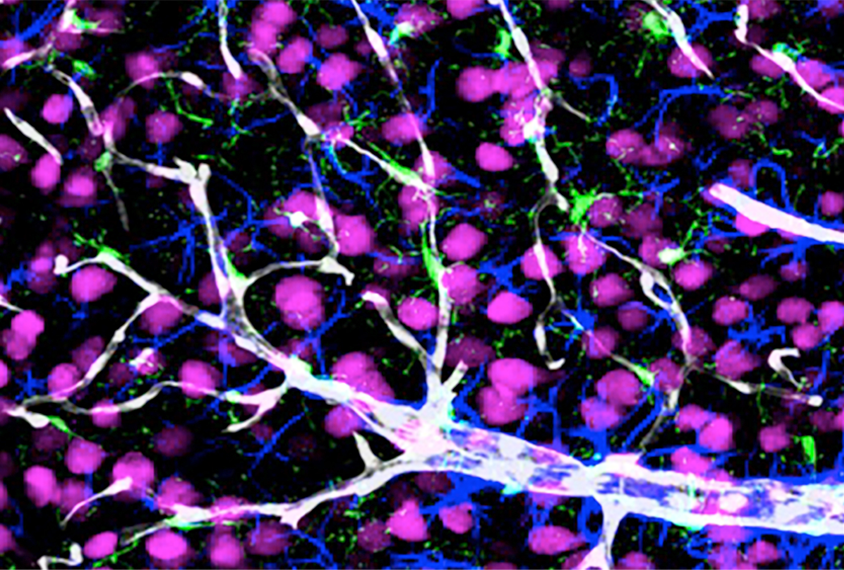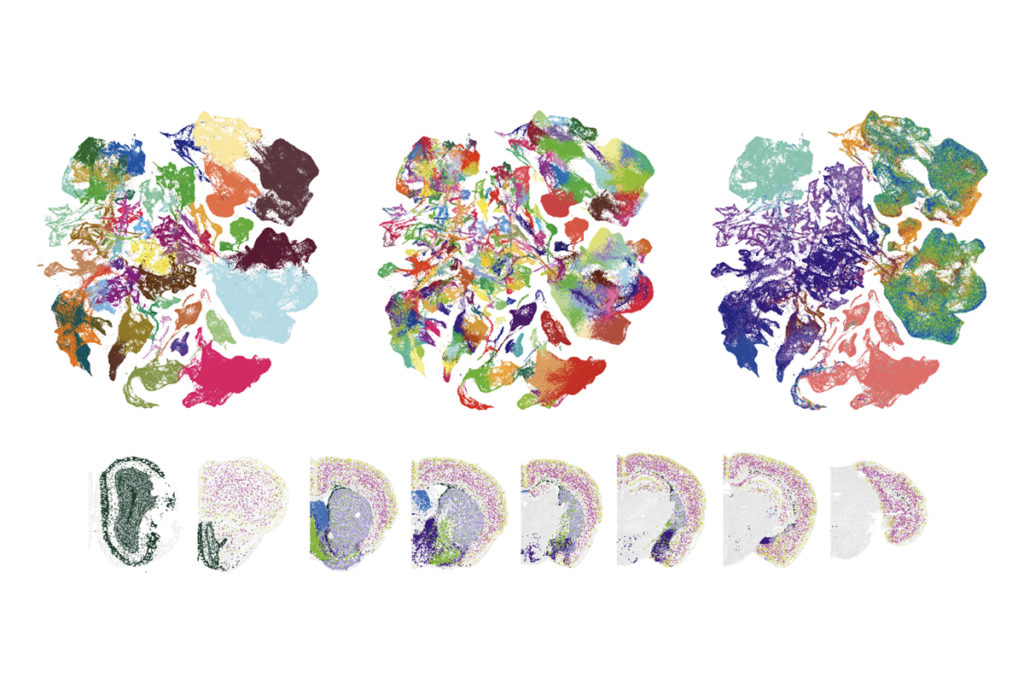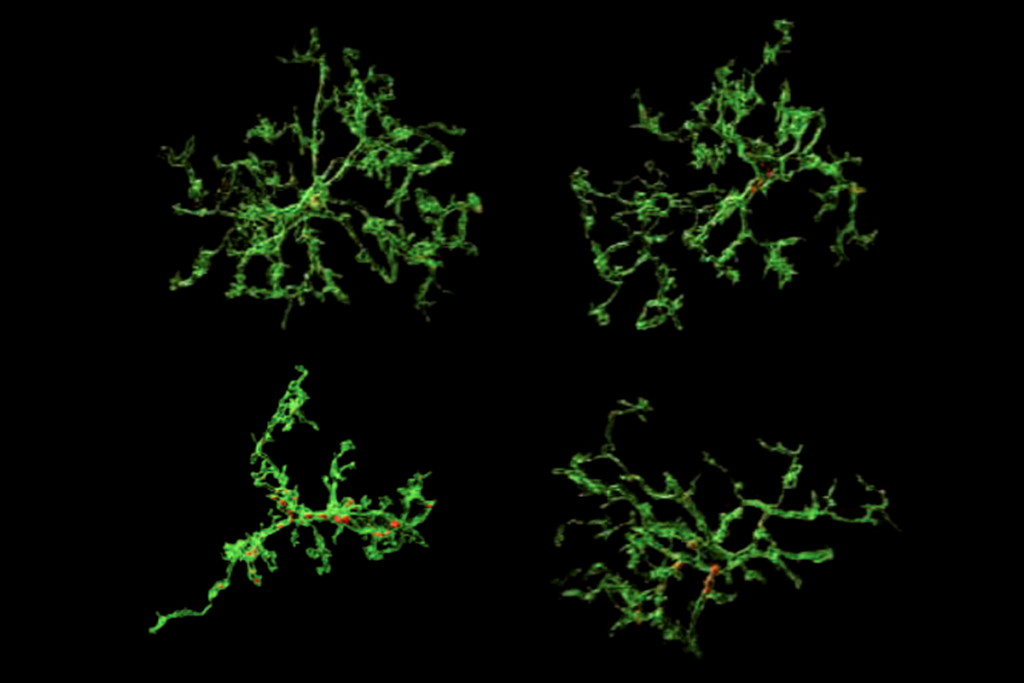A mutation that prevents certain amino acids from entering neurons leads to the cells’ death early in brain development, according to a new study in mice. The findings provide clues to what happens in the brains of people with the mutation, which is linked to autism.
The mutation affects the SLC7A5 gene, which encodes a protein that transports some large amino acids across the blood-brain barrier. Most of these amino acids are essential, meaning the body cannot produce them and has to get them from food. Mice missing the SLC7A5 gene in cells of the blood-brain barrier develop microcephaly, or an unusually small brain, after birth and have motor and social difficulties, a 2016 study showed.
In the new study, published last month in Cell, the same team of researchers discovered that neurons in the mouse brain also express SLC7A5. Knocking the gene out of some of those neurons starves the cells of amino acids and causes them to die.
“Obviously neurons need some fuel,” says lead researcher Gaia Novarino, professor of neuroscience at the Institute of Science and Technology in Klosterneuburg, Austria. It’s interesting “to really see that our neurons are dependent on that level, specifically at certain stages, on those amino acids.”
N
ovarino and her team also filled in a blank in the literature: how metabolism changes as the mouse brain develops.It was known that, in the developing brain, neural progenitor cells get energy through anaerobic glycolysis — that is, by breaking down glucose in the absence of oxygen. Later, support cells called astrocytes feed mature neurons the vast amounts of energy needed to fire and reset. Surprisingly, there was little information about what happens in between, when neurons begin to fire but do not yet have support from astrocytes.

It turns out that during this transitional period, young neurons get their energy by metabolizing a set of essential amino acids called branched-chain amino acids (BCAAs), Novarino’s team discovered by analyzing the metabolomes of developing mouse neurons.
“That was eye-opening to me, how dramatically the metabolism of the cell seems to change,” says John Jay Gargus, director of the Center for Autism Research and Translation at the University of California, Irvine, who was not involved in the study.
BCAAs are among the amino acids that SLC7A5 transports. In mice, young neurons missing the gene are therefore starved of their primary energy source. These neurons switch to running on lipids, but they fire less frequently than usual and then disappear within 10 days after birth, the team found. As a result, SLC7A5 mice have smaller brains than controls do.
Similar to these mice, two children with SLC7A5 mutations, whom Novarino and her team identified and monitored after their 2016 study, were born with mild microcephaly that became more pronounced within seven months.
I
t is not clear why the brain seems to be partially protected from SLC7A5 mutations before birth, but perhaps amino acid levels during that period are higher overall or controlled by different transporters, Novarino speculates.“I think this paper is going to have a huge impact on the field,” says David Amaral, distinguished professor of psychiatry and behavioral sciences at the University of California, Davis MIND Institute, who was not involved in the new work. “It shows that changes in metabolic pathways can have wide-range effects downstream.”
He says the research aligns with a larger pattern in the field: About 17 percent of autistic children show an imbalance in their amino acid levels, according to a 2018 study that Amaral led.
Unfortunately, the new insights into SLC7A5 smashed some of the team’s hopes for treatments. In the 2016 study, mice missing SLC7A5 in cells of the blood-brain barrier showed improvements in their motor and social problems after the team injected amino acids directly into their brains. Amino acid injections might not help people who have SLC7A5 mutations, because the transporter would likely be faulty in neurons and not just the blood-brain barrier. “There is no way we’re going to push more amino acids inside the neurons,” Novarino says. An alternative strategy would be to try to get the neurons to fire normally so that they do not get pruned, she says.
“With this particular mutation, there may be difficulties in trying to find a targeted approach,” Amaral says. But by paying more attention to the metabolomes — that is, the molecules that are used and produced in metabolism — of people with autism, researchers might be able to identify subtypes that could be treatable. “I think the bigger picture is that as we unravel some of these metabolic disturbances … there well may be some potential for effective treatment.”





